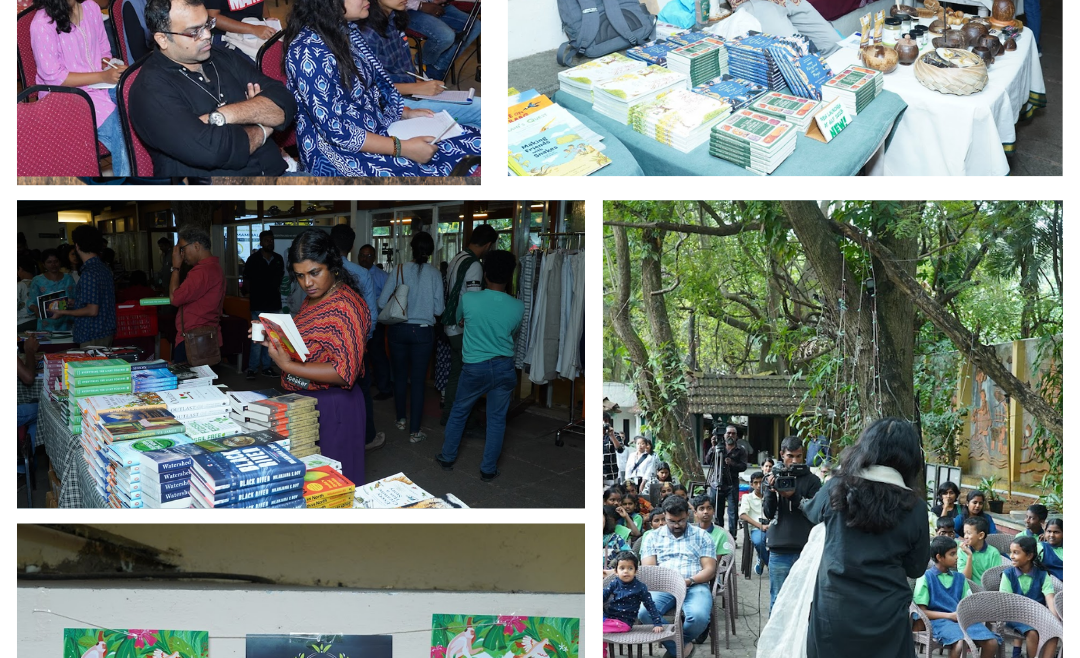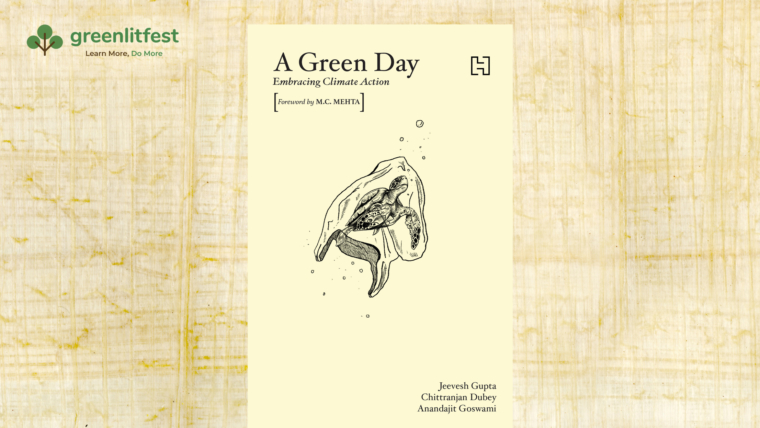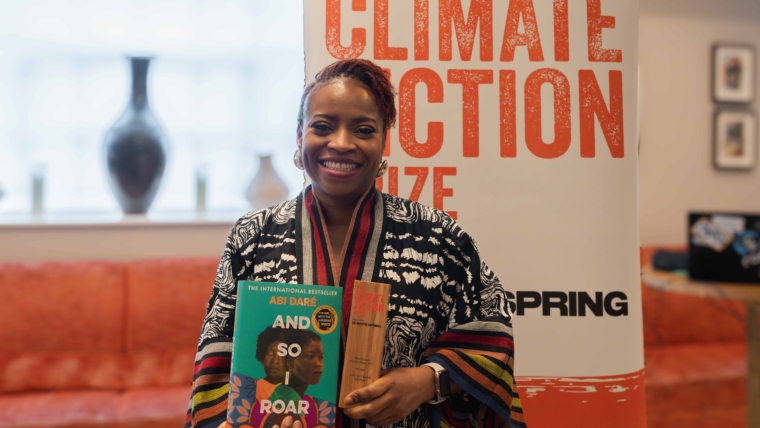by Monisha Raman
On a pleasant November morning, writers, publishers, conservationists, scientists, academics, literary enthusiasts and nature lovers gathered at Century Club in Cubbon Park, the green heart of Bengaluru, for a day of conversations and literary reflections on the environment.
Conservation beyond the Generic
In his keynote address, Dr Ullas Karanth highlighted our economy’s dependence on energy, called for balance in development and reminded the audience that progress does not have to be short-sighted. He also pointed out how nature conservation revolved around one species – the human being – and stressed the need for an inclusive model.
In the first panel of the day, ‘Mega Mammal Myopia: Looking Past the Big Stars of Conservation’, Environmental historian Dr Mahesh Rangarajan echoed a similar thought and detailed how success stories around big mammal conservation shadowed the other species in a biosphere. Rohan Arthur from the Nature Conservation Foundation (NCF) corroborated that a conservation plan that does not consider most species in an ecosystem can bring about devastation. He cited the example of an increasing number of green turtles depleting seagrass underwater, posing a threat to other small species in the ecosystem.
In the riveting conversation, ‘Grassroots to Green Shoots: The Changing Face of Green Entrepreneurship’, author Nagaraja Prakasam spoke about India’s grassroots innovators and mentioned the unique solutions they had to some of the local problems. He added that the obstacles that threatened corporates and scientists did not deter these innovators and stressed the need for creating self-sufficient societies.
Inclusivity and Interconnectedness
When the Tehri dam was built across the Bhagirathi River in Uttarakhand, villages upstream of the reservoir and in the periphery were inundated. In the panel, ‘Landscapes of Loss: Livelihoods in Peril’, author Stephen Alter recalled the tragedy that befell the villagers, who not only lost the land they considered sacred, but also the stories, lore and indigenous knowledge of the landscape. Authors Aparajita Datta and Yuvan Aves emphasised the pressing need to include the voices of people closely bound to the ecosystems.
‘A tribal’s way of life, his inextricable link to the land and the forest is considered unimportant and is not often a part of the discourse,’ rued author and filmmaker Devashish Makhija in his session, ‘Other People, Other Places: Exploring Otherisation in Cinematic Storytelling’. Screening poignant clips from his films, he spoke about the guilt of appropriation, even as he mentioned being able to connect to the rootlessness of the displaced as his parents were Sindhis who came to India after the partition.
In a discussion about the business of green books, Anita Mani, publisher of Indian Pitta, India’s first dedicated imprint for bird lovers, conservationists and policymakers, pointed to the sublime presence of the natural world in some books though they are not categorised as ‘green literature’. She added that the consciousness to include nature is more cohesive among writers today. Publisher R Sivapriya from Bloomsbury India narrated an incident of one of her writers receiving an email from Amitav Ghosh, who wanted his peers to document environmental change and catastrophe in their work. She admitted that sales teams in trade publishing houses do not always agree with editors who pitch green manuscripts.
Dwelling on Ghosh’s sentiment and seemingly offering a clarification, artist Amruta Patil described how talented artists can find many ways to seam the concerns of the day into their narration if they pick the right thread. In her gripping presentation in ‘When Pictures Speak: Telling Green Stories through Graphic Narratives’, Amruta presented images from her novels portraying the price humans have to pay when they disrespect the earth.
At the Sampige Village, outside the main hall, Priya Muthukumar engaged children with music and movements in an interactive storytelling session followed by a clay activity. Later, high school students Dhwani Nagendra Suri and Vihaan Srivastava spoke to Meghaa Gupta in the panel ‘We, the Children, and How we Read‘ about their reading choices, parental interference in these and their thoughts on environmental literature.
Masterclasses and Workshops
At the workshop space, children learned to create realistic animal characters in a writing masterclass by the prolific children’s author Nandini Nayar, while the accomplished library educator JoAnne Saldanha offered handy tips and advice on how to curate green libraries for homes and schools. Young adults were taught how to contribute to scientific research as citizen scientists by WWF-India’s Shonali Chenzira and author Meena Raghunathan conducted an insightful workshop on developing meaningful education material on the environment.
New Green Reads
From cookbooks and anthologies to debut issues of journals, various new green reads were promoted at the festival, across the three categories in which it awards books.
Children’s books:
- Are There Bun Shops in the Jungles of India by Nandini Nayar
- When Fairyland Lost its Magic by Bijal Vachharajani and Rajiv Eipe
- Guardians of the Forest by Priyadarshini
- Let’s Talk about Trees by Roopa Pai and Barkha Lohia
- The Magical Everything by Jenny Pinto
General Non-fiction:
- Intertidal: A Coast and Marsh Diary by Yuvan Aves
- The No-Waste Kitchen Cookbook by Arina Suchde
- Women in the Wild: Stories of India’s Most Brilliant Women Wildlife Biologists edited by Anita Mani
- A debut issue of the Journal of Eco+urbanism and Neuroarchitecture by Ann Rochyne Thomas
Eco retail therapy
Carefully curated green reads for children and adults were put up for sale at the venue by the independent bookstores Funky Rainbow and Atta Galatta. A fascinating amalgam of sustainable, eco-friendly products like clothing for women by Maba India, eco-wellness products for hair and skin by Bhrsa, plantable seed paper calendars, pencils, cork leather wallets and notebooks by Net Zero Living, recycled stationary items by Second Life India, organic dairy products by Akshaykalpa, and coconut chips, chocolates and interesting knick-knacks made from coconut shell by Tengin were also on sale. Neosan piqued curiosity with their on-site waste incinerator for non-compostable waste.
In Conclusion
Robert Macfarlane said literature does not believe in deliverables. Literary festivals do not boast of a visible output too. While the role of literature is to ask questions, literary festivals highlight those interrogations, nudge collective thinking and aim to erase ignorance. People from various walks of life gathered at Century Club and the words of wisdom that echoed were a reminder that we are indeed an intricate part of the changing earth, lest we forget.
Monisha Raman’s essays and short stories have been published by various magazines in India and internationally. Her work was a part of the anthology Narratives in Domestic Violence published by the International Human Rights Arts Festival



